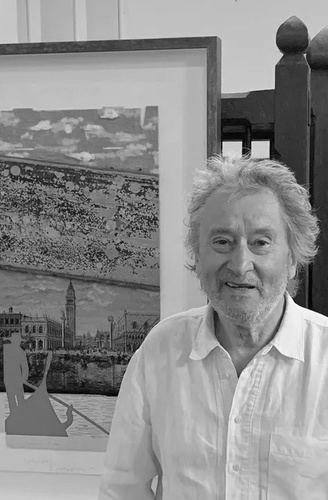Colin Self b. 1941
Colin Self is a British artist, known for his Pop Art affiliations and themes of Cold War culture in his work.
Born in Norfolk in 1941, Self studied first at Wymondham College, followed by Norwich School of Art where he was taught by Jeffrey Camp and Micheal Andrews, and then the Slade School of Fine Art where his tutors included Keith Vaughan. His early drawings and collages were praised by contemporaries including David Hockney and Peter Blake. Visiting the USA and Canada in 1962 and 1965, drew his attention to Cold War politics resulting in prints centred around the subject of nuclear threat. Similarly, he explored themes of violence and sexual threat at this time, with his work featuring glamorous but unnerving models metaphorically embodying the sense of unease felt during the Cold War.
Hailed by Richard Hamilton as ‘the best draughtsman in England since William Blake’, Self’s long career has been diverse in terms of both medium and subject matter, exploring whilst retaining a consistent common thread with regards to his stylistic similarities to Pop, the distinction between his own work and that of his contemporaries being in his own words, ‘pop artists embraced Materialism, I didn’t.’
During the 1960s, Self was well known for his prints and was thought of as an innovator and central figure in the prevalence of printing during this decade. He moved back to Norfolk in 1970s, working in seclusion, on watercolours and charcoal landscapes as well as subject matter concerned with politics, money and the unemployed. After Self travelled to the former Soviet Union in 1985-86, he recommenced his explorations into Cold War culture whilst simultaneously producing collages which combine elements of the subconscious with Surrealism.
In 1997, the Tate Gallery held a show of their acquisitions of his work and in 2008 Pallant House Gallery held a retrospective of his work. His work can be found in numerous private and public collections including that of Museum of Modern Art, New York, Leeds Art Gallery and the British Council Collection.

